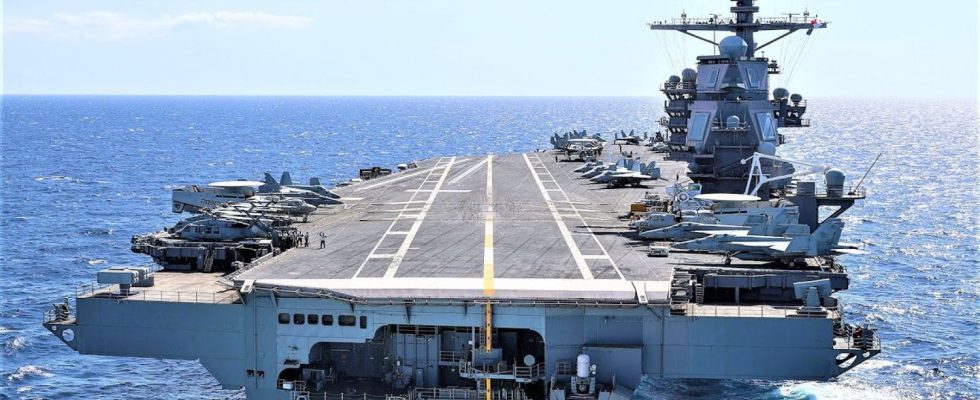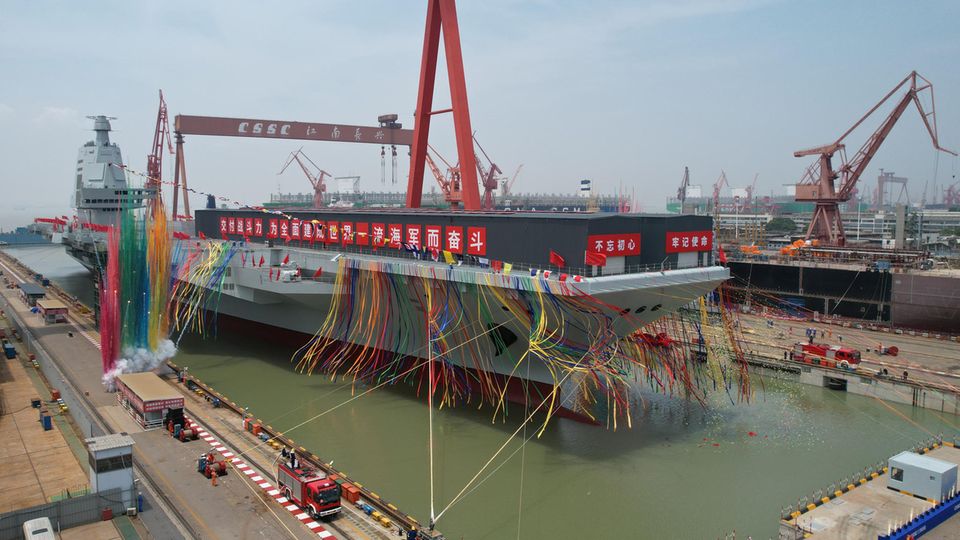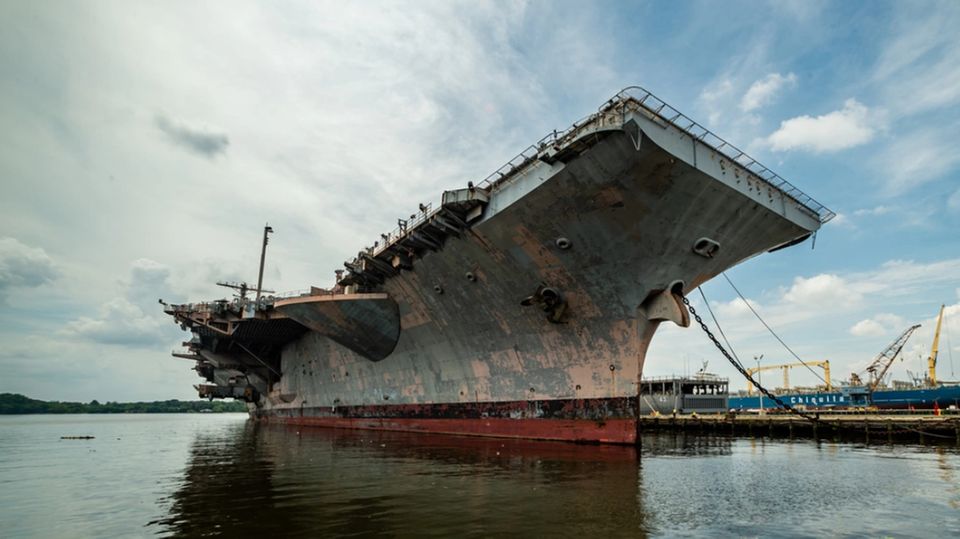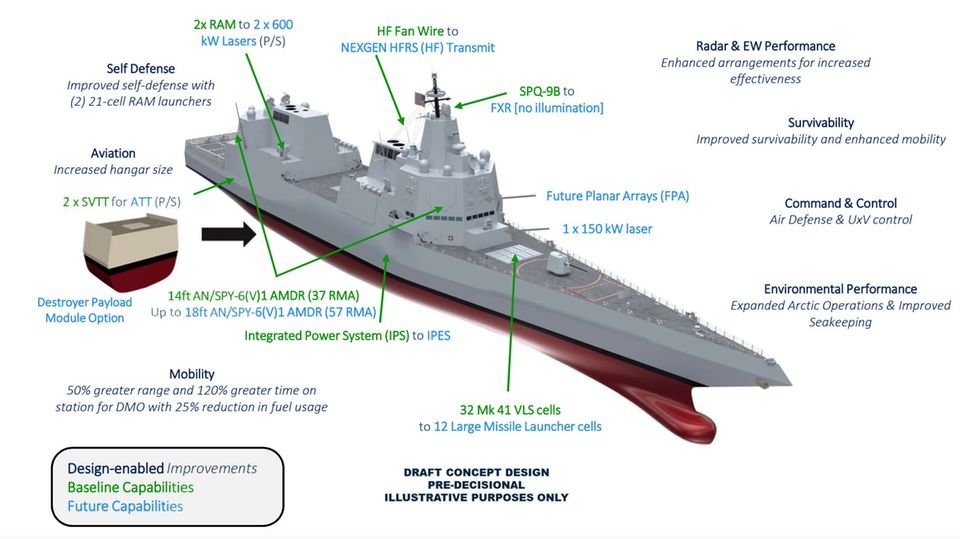upgrade
War simulation: This is how Beijing wants to destroy the US carrier groups with a missile strike
The eUSS “Gerld R. Ford” is the most powerful and expensive carrier in the world.
In a “war game” Chinese scientists have simulated an attack on a US aircraft carrier group in the South China Sea. The “USS Gerald R. Ford” and its escort fleet were “certainly” destroyed.
Tensions are rising in the South China Sea and in the waters around Taiwan. Should the PLA (People’s Liberation Army) isolate the island, only the US carrier groups could break the blockade.
In the center of such a group is the carrier, protected by a whole swarm of combat ships, and sometimes submarines. How safe the valuable carrier is is controversial. In NATO exercises, submarines repeatedly manage to overcome the protective cordon unnoticed and “sink” the carrier by skilfully exploiting currents and layers of water.
Attack in multiple waves
In the Chinese simulation, however, the group was not attacked with a submarine, but with anti-ship hypersonic missiles. Due to the high speed and long range, such weapons cover enormous areas. The threatened zones of the oceans are much larger than they used to be, while the harmless ones are much smaller. The Chinese used 24 missiles against the US group. Because it was a computer simulation, they ran the attack 20 times. A commercial war game was used as the basis, but the data was adapted.
The background of the simulation is highly political: the US fleet approached an island claimed by China despite a warning. In fact, China lays claim to a large portion of the South China Sea. The United States and most countries in the world do not recognize these claims. To prevent Chinese de facto sovereignty over the areas, the US Navy regularly sends ships into the disputed zones.
Such simulations are not uncommon, but the South China Morning Post reports that the results were published in a Chinese journal. Lead researcher Cao Hongsong of North University of China said almost all US surface ships were destroyed by the attacks. According to the researcher, the carrier groups can be easily eliminated with a coordinated missile attack.
Cheap decoys
Two different hypersonic anti-ship missile models were used in the simulation, some even being shot down from the Gobi desert. The 24 missiles attacked in three waves. The USA’s newest ships were selected, which have the best chance of repelling such an attack. Among other things, they have the RIM-161E SM-3, an anti-missile capable of intercepting ballistic missiles in the intermediate and final stages. In principle, hypersonic weapons can also be intercepted, especially if they approach the defense battery directly. The US group consisted of the CVN-78 “Gerald R. Ford”, a Ticonderoga-class cruiser (CG56) and four Arleigh Burke-class guided missile destroyers (DDG-103) (The most powerful and expensive aircraft carrier in the world).
Hypersonic weapons have a different meaning when attacking a moving target such as a carrier group than when used against static targets. The carriers are constantly moving at high speed, but if a very fast attacker arrives, the group will still be within the target area that the missile can reach on final approach. While the US fleet’s chances were very generous, the Chinese side had to live with limitations. She was only allowed to use a limited number of weapons and had no access to satellite data. “Be lenient with the enemy and strict with yourself,” Cao Hongsong explains the principle.
The Chinese used two types of different quality. The less precise and cheap weapons should primarily exhaust the arsenal of anti-missile fleet. After the first wave, four of the high-precision weapons attacked the carrier, another four attacked the destroyers, and two of the simpler missiles attacked the cruiser. Only four of the original six ships survived this attack. The surviving US ships were attacked in a third wave with six of the simple missiles. The attack was repeated 20 times to eliminate random factors. On average, 5.6 out of six surface ships were sunk.
Limited explanatory power
Such simulations are only ever as good as the data that goes into them. When someone starts manipulating this data, they always get the desired result. But Cao Hongsong is considered a proven expert in military simulations. “The accuracy of the data used in war simulations is critical to their usefulness in evaluating possible scenarios,” said an SCMP aerospace and defense industry engineer who asked not to be named. “If the data on Chinese hypersonic missiles used in this war simulation is far from reality, this could affect the quality of the simulation and lead to inaccurate conclusions”.
What is interesting about the simulation is that the Chinese did not use exact satellite data and observed the US fleet from the sea. The “decoy tactics” with cheaper but equally deadly missiles are frightening. The US fleet had no choice but to use the valuable defensive missiles against the first wave. A deadly game that the ships cannot win. Even if we manage to increase the number of defensive weapons, it will be easier for the attacker to launch more and more cheap missiles.





